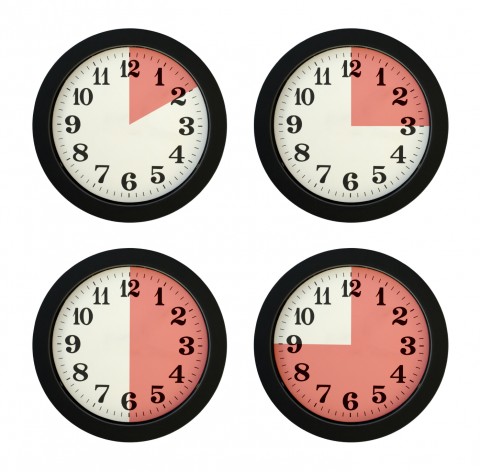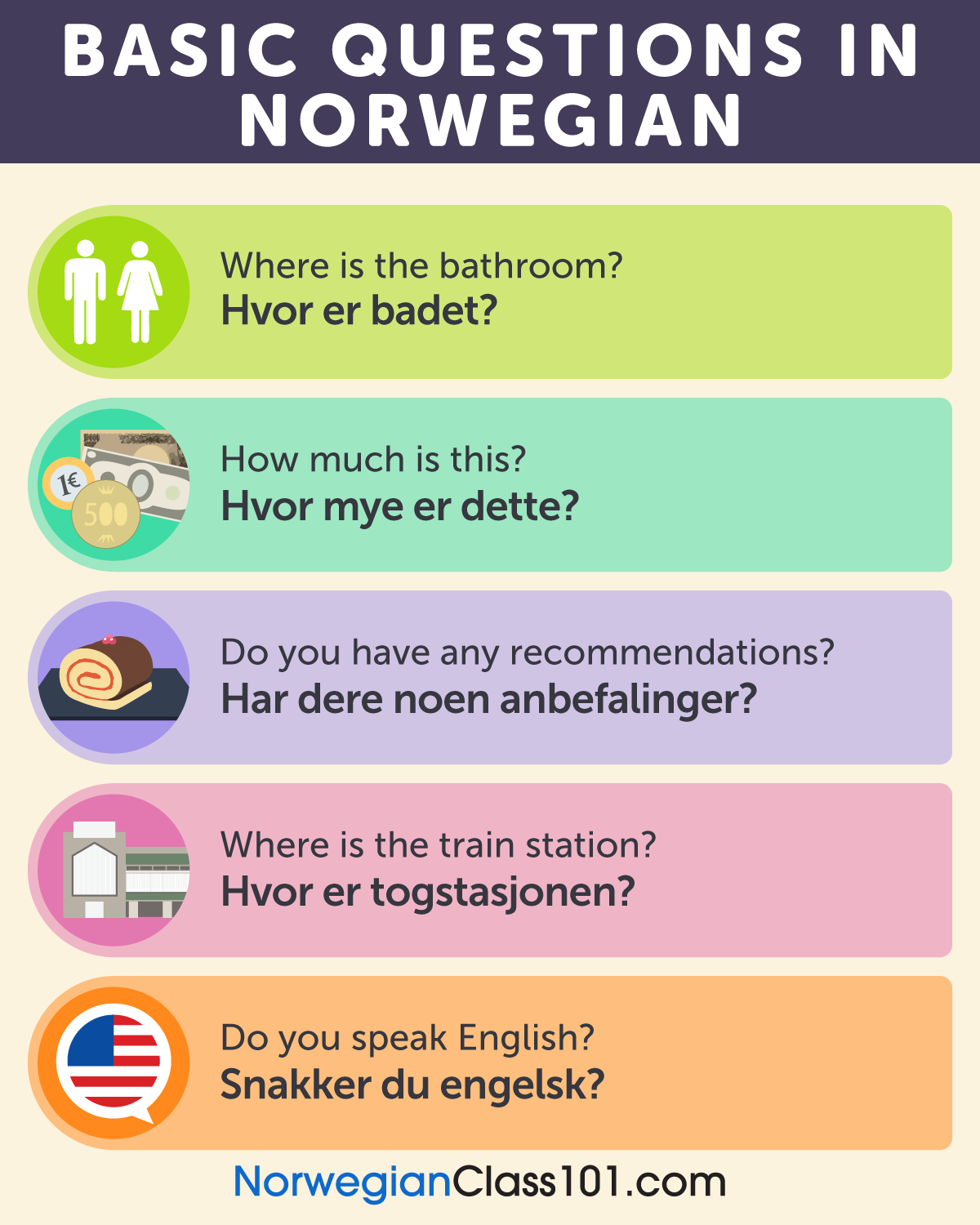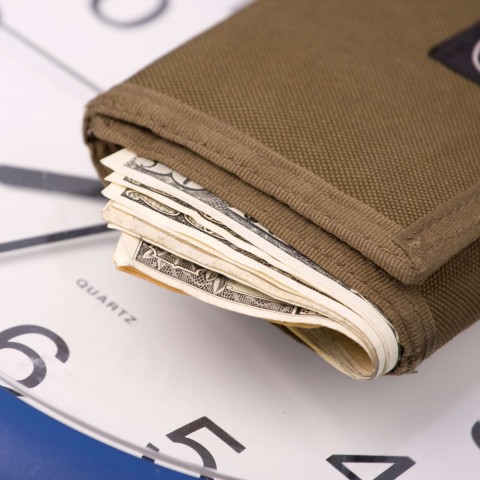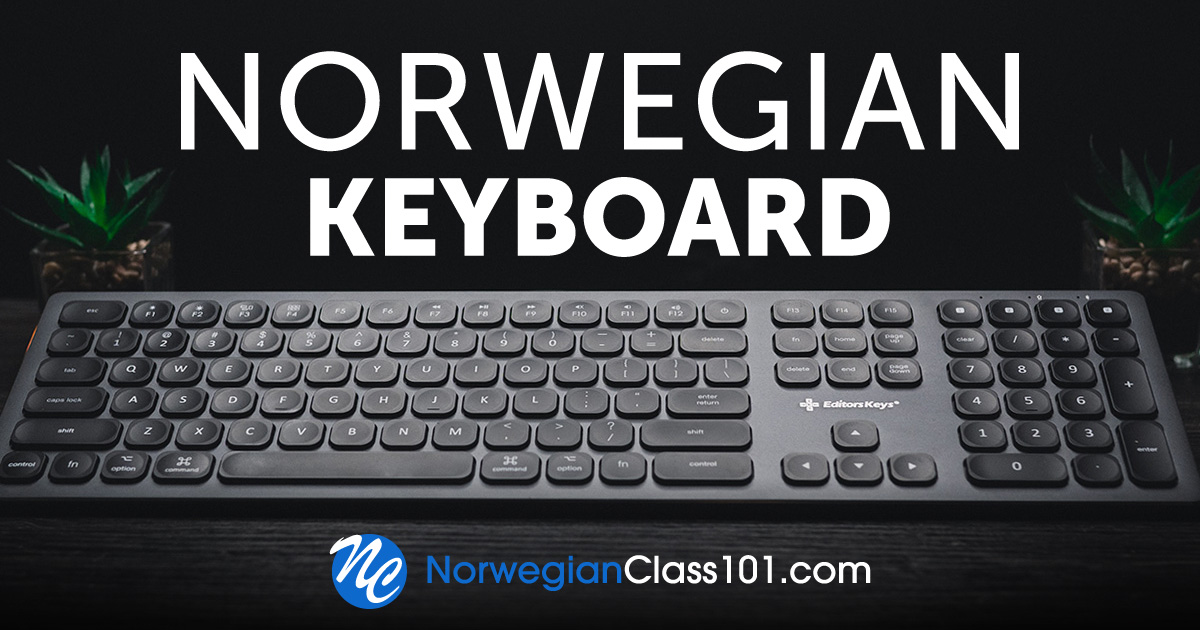
Being able to tell time is an important part of learning a new language. It helps you both when conversing with others as well as when planning events, meetings, or other activities. On top of this, it also gives you a great opportunity to use your prior knowledge of numbers and simple sentence structure.
Are you often late? If you are, make sure you’re on time in Norway! Being on time in Norwegian culture is important. Arriving late is considered rude, and in Norway, it’s important to respect each other’s time. If you arrive late, without notice, it will seem like you don’t respect them or their time.
Keep in mind that if a specific time isn’t set, for example “around eight,” Norwegians generally don’t care when you arrive. That is, if you arrive within one or two hours after.

Norway uses the time zone GMT +2 in the summer, and GMT +1 in the winter. “Daylight Saving Time” is called Sommertid, meaning “Summertime.” Sommertid starts in March and ends in October.
In Norway, the twenty-four-hour clock, also called military time, is used. If someone uses the 12-hour clock, they don’t say “A.M.” or “P.M.” – instead, Norwegians know what time someone’s referring to based on the time of day. If this isn’t clear, it’s normal to ask På kvelden eller morgenen? meaning “At night or morning?” This can be confusing at first, but luckily it means that you can use the same phrases for both day and night!
To learn how to tell the time in Norwegian, the only prior knowledge you should have is how to count from 1-60. However, you could get away with only knowing the numbers 1-12. Even if you’ve just started learning Norwegian, or are brushing up on some knowledge, this is a very simple system and you should learn it in no time using this article!
 Table of Contents
Table of Contents
- What Time is it?
- Hour and O’Clock
- Minutes
- Hours Divided into Minutes
- General Time Reference of the Day
- Time Adverbs
- Time Proverbs and Sayings
- How NorwegianClass101 Can Help You Learn Even More Norwegian!
1. What Time is it?

Before you can tell time in Norwegian, you need to know how to ask about time and how to recognize when you’re being asked about time in Norwegian. Norwegian has two ways of asking for the time and they both mean the same thing. There’s no formal way of asking this question; they’re both polite.
Hva er klokka? “What time is it?”
Hvor mye er klokka? “What time is it?”
Hva er klokka? literally means “What is the clock?” and Hvor mye er klokka? means “How much is the clock?” This might seem a little strange in English, but as shown above, they both mean “What time is it?”
Please keep in mind that klokka can also be pronounced or written as klokken. Which one is used depends on if the person has a dialect or not.
1 – Do you have the time please?
Here’s a very similar way of asking for the time in Norwegian. The only difference is that the word unnskyld, meaning “excuse me” and/or “sorry” is placed in front of the question to make it more polite.
Unnskyld, hvor mye er klokka? “Excuse me, what time is it?”
Unnskyld, vet du hvor mye klokka er? “Excuse me, do you know what time it is?”

How to Answer
Now that you know how to ask for the time in Norwegian, let’s take a look at how you can answer. As always, there are many ways of answering this question. We’ll go through the most common ones.
As a rule, you should always use the proper answer when learning Norwegian. As you learn more and become more confident in your Norwegian language skills, you can start using the other phrases to sound more natural.
As mentioned earlier, when asking about the time in Norwegian, you actually ask “What is the clock?” In Norwegian, the word for “time” isn’t used the same way as in English when telling or asking about time. Instead, the word klokka, meaning “clock,” is used.
Let’s have a look at the most proper way of answering:
Q: Hva er klokka? “What time is it?”
A: Klokka er 5. “The time is 5 p.m.”
The above example is also the most common and polite way to answer the question.
There are two other ways of answering when asked about the time in Norwegian. These are shorter, and are commonly used among friends and family. This way of answering is more casual, but it’s still not considered rude. They’re just simply less polite.
Q: Hva er klokka? “What time is it?”
Q: Den er 5. “It’s 5 p.m.”
Q: Hva er klokka? “What time is it?”
Q: 5. “5 p.m.”
2 – What time is the ___?
As mentioned, an important reason for knowing how to tell time in Norwegian and ask for it is for planning. This can be for events, meetings, and other things that are going to happen.
There are two ways to ask when something is in Norwegian. Again, one is a longer version and the other is a shorter version.
Hvilken tid er [møtet]? “What time is the [meeting]?”
This one can seem a little confusing if you’re familiar with the Norwegian adjectives. Hvilken does, in fact, mean “which” in English, but is at times used as “what.” The more you learn about the Norwegian language, the more natural this will become and you’ll know when to use it. But for now, don’t worry about it! Just be aware that it’s used in this setting.
Hvilken tid er møte? is the most polite way of asking. It’s generally used less often than the shorter version below, simply because it’s longer.
Når er [møtet]? “When is the [meeting]?”
See why this is more commonly used? It means the same thing, even if the word “time” isn’t included. It’s more simple to say, and it gets the same message across. Norwegians love their shorter sentences, so this sounds very natural in Norwegian.
In the above examples, the word “meeting” was used as an example. But not everyone is in Norway for meetings. Take a look at the list below to practice for other situations where you might need to know the time.
Hvilken tid er festen? “What time is the party?”
Hvilken tid er timen? “What time is the class?”
Hvilken tid er middagen? “What time is the dinner?”
Hvilken tid er treningen? “What time is the training?”
Hvilken tid er bryllupet? “What time is the wedding?”
Hvilken tid er avreise? “What time is the departure?”

How to Answer
Answering these questions is nearly identical to answering what the time is in Norwegian. The only difference is that you’ll switch out the word klokka with what you’re being asked about.
Q: Hvilken tid er middagen? “What time is the dinner?”
A: Middagen er 5. “The dinner is at 5 p.m.”
Q: Når er møtet? “When is the meeting?”
A: Møtet er 5. “The meeting is at 5 p.m.”
You can alternatively say Møtet er klokken 5, meaning “The meeting is at 5 o’clock,” but this isn’t very common.
As you might already have guessed, the three other ways of answering are actually the exact same as how you would answer when asked what the time is in Norwegian. The only difference is that the pronoun changes depending on what event or situation you’re mentioning.
When answering what the time is, notice how you’re answering with Den, as in Den er 17. When you’re answering when a meeting is, this pronoun will change to Det.
Q: Når er møte? “When is the meeting?”
A: Det er 5. “It’s at 5 p.m.”
Q: Når er festen? “When is the party?”
A: Den er 5. “It’s at 5 p.m.”
As for the last way of answering, this one is the same.
Q: Når er møte? “When is the meeting?”
A: 5. “5 p.m.”
2. Hour and O’Clock

We briefly mentioned this earlier, but it’s important to remember that Norwegians use the twenty-four-hour clock. In the beginning, this can seem confusing, but if you know the numbers, it should be easy to learn!
An important thing to note is that when telling time in Norwegian, “1” is actually written and pronounced ett instead of en.
1 – Hours
Using the twenty-four-hour clock means that Norwegians have two ways of saying the time.
Q: Hva er klokka? “What time is it?”
A1: Klokka er fem. “It’s 5 p.m.”
A2: Klokka er sytten. “It’s 5 p.m.”
Confused? No worries. When someone is telling you the time in Norwegian, you can both get 17 or 5 as an answer if the clock is 5 p.m. Both are right, and which one is used depends on the person answering. We’ll take a look at all the hours so that you can learn this!
In Norwegian, the word “o’clock” isn’t used; however, there is a Norwegian equivalent. This equivalent is hel, which in English means “whole.” Keep in mind that while Norwegians use this word, it’s not used together with a number. When hel is used, it’s used as its own answer. Hel is used when the speaker assumes you know what time it is.
Q: Hva er klokka? “What time is it?”
A: Den er hel. “It’s on the hour.”
Look weird? That’s because it sort of is.
Let’s say you’re hanging out with a friend. You have to leave at 18:30, and the last time you had a look at the clock it was 17:40. After a while, you decide to ask your friend what time it is. He assumes you have knowledge that the clock is around or soon 18:00. He then answers Den er hel, meaning “On the hour.” He doesn’t specify what actual time it is, but is assuming that you know.
This is a very common answer to get in Norwegian.
“Hour” in Norwegian is time. This is used when talking about lengths of time.
Now that you understand some of the basics of how the Norwegian clock system works, let’s go through the hours! The chart below will not only show you what each hour is called, but will also teach you how to write time in Norwegian.
| Norwegian (A.M.) | English (A.M.) | Norwegian (P.M.) | English (P.M.) |
|---|---|---|---|
| 00.00 Midnatt | Midnight | 12.00 Klokka tolv | 12 p.m. |
| 01.00 Klokka ett | 1 a.m. | 13.00 Klokka ett | 1 p.m. |
| 02.00 Klokka to | 2 a.m. | 14.00 Klokka to | 2 p.m. |
| 03.00 Klokka tre | 3 a.m. | 15.00 Klokka tre | 3 p.m. |
| 04.00 Klokka fire | 4 a.m. | 16.00 Klokka fire | 4 p.m. |
| 05.00 Klokka fem | 5 a.m. | 17.00 Klokka fem | 5 p.m. |
| 06.00 Klokka seks | 6 a.m. | 18:00 Klokka seks | 6 p.m. |
| 07.00 Klokka sju | 7 a.m. | 19:00 Klokka sju | 7 p.m. |
| 08.00 Klokka åtte | 8 a.m. | 20.00 Klokka åtte | 8 p.m. |
| 09.00 Klokka ni | 9 a.m. | 21.00 Klokka ni | 9 p.m. |
| 10.00 Klokka ti | 10 a.m. | 22:00 Klokka ti | 10 p.m. |
| 11.00 Klokka elleve | 11 a.m. | 23.00 Klokka elleve | 11 p.m. |
As mentioned earlier, Norwegians often answer the time in two different ways. For example, when the time is 11 p.m., you can choose if you want to say tjuetre (23) or elleve (11). Both are correct and both will be understood. If you want to be clear that something is happening at 11 p.m. and not 11 a.m., you should say tjuetre so that it’s understood that it’s in the evening.
2 – Using hours in a sentence
Now that you know how to say all the hours in the day, let’s put this new knowledge into a sentence!
Jeg har norsktime klokka ni. “I have the Norwegian lesson at 9 a.m./p.m.”
Jeg har norsktime tjueen. “I have the Norwegian lesson at 9 p.m.”

Notice how when saying 21 (tjueen), we omit the word klokka. Also notice that you can say ni for both 9 a.m. and p.m. Usually, the people you talk to will understand whether it’s in the evening or morning based on what the subject is and the current time. However, if you want to be very clear, the safest bet is to say tjueen instead of ni if you’re referring to the evening.
Q: Hva er klokka? “What time is it?”
A: Den er nitten. “It’s 7 p.m.”
Q: Hva er klokka? “What time is it?”
A: Den er syv. “It’s 7 a.m./p.m.”
Q: Hva er klokka? “What time is it?”
A: Nitten. “It’s 7 p.m.”
3. Minutes
So far we’ve only gone through how to tell the time in Norwegian when it’s a round number, or “o’clock.” Now we’ll take a look at minutes and how to add minutes to the hour. With the knowledge you’ve gained so far in this article, this should be easy!
“Minute” and “minutes” in Norwegian are spelled similarly to how they are in English.
Minutt “Minute”
Minutter “Minutes”
Vi drar om ett minutt. “We’re going in one minute.”
Vi drar om to minutter. “We’re going in two minutes.”
Adding -er to minutt makes it plural. This applies to a lot of other words as well, so make a mental note for the future!
When telling time in Norwegian and adding minutes, the minutes are always added first. Normally, the word minutt or minutter isn’t added, but again, this depends on what you or the person you’re talking to prefers. We’ll show you both ways in the examples below. The examples will also have the direct translations so that you can understand how the sentences are structured.
16:23 (4:23 p.m.)
Klokka er sju på halv fem. “The time is seven to half five.”
Klokka er tjuetre over fire. “The time is twenty-three over four.”
16:23 (4:23 p.m.)
Klokka er sju minutter på halv fem. “The time is seven minutes to half five.”
Klokka er tjuetre minutter over fire. “The time is twenty-three minutes over four.”
There are no particular rules for which one to use, as these all mean the same thing: 16:23. However, most people would say Klokka er sju på halv fem, since this is the easiest.
Now let’s take a look at how to say when a time is “five minutes past” and “five minutes over” in Norwegian.
16:25 (4:25 p.m.)
Klokka er fem på halv fem. “The time is five to half five.”
Klokka er fem minutter på halv fem. “The time is five minutes to half five.”
16:35 (4:35 p.m.)
Klokka er fem over halv fem. “The time is five over half five.”
Klokka er fem minutter over halv fem. “The time is five minutes over half five.”
Since this is Norwegian, again, we can make the sentences shorter! This is almost always used when talking with friends and family. Here, we also have some of the assumptions that you, or the one asking, has some knowledge about what time it was earlier since the actual hour isn’t mentioned.
Q: Hva er klokka? “What time is it?”
A: Fem (minutter) over halv. “Five (minutes) past half.”
Q: Hva er klokka? “What time is it?”
A: Fem (minutter) på halv. “Five (minutes) to half.”
1 – Seconds
So what comes after minutes? Seconds. Or in Norwegian: Sekunder!
Sekund “Second”
Sekunder “Seconds”
Gi meg ett sekund! “Give me a second!”
Gi meg to sekunder! “Give me two seconds!”
4. Hours Divided into Minutes
Now that you have knowledge about how the sentences are structured when asking and telling time in Norwegian, we can take a look at how Norwegian works when we’re dividing the hour into minutes.

1 – Half
As you might have noticed from the examples above, where the examples were directly translated, Norwegians say “half past” differently than in English. Instead, Norwegians simply say “half” followed by the next hour.
13:30
Klokka er halv to. “The time is half past one.”
This is the correct translation over to English. However, in Norwegian, we’re actually saying “The time is half two.” Below are two examples that are directly translated into English.
14:30
Klokka er halv tre. “The time is half three.”
15:30
Klokka er halv fire. “The time is half four.”
2 – Quarter
Telling time in quarters is the same in Norwegian as in English!
13:45
Klokka er kvart på to. “The time is a quarter to two o’clock.”
13:15
Klokka er kvart over to. “The time is a quarter past two o’clock.”
You can also say Femten minutter over, meaning “Fifteen minutes over” and Femten minutter på, meaning “Fifteen minutes to.” However, Kvart på is used most often.
3 – A third
We already had a look at thirds when talking about minutes. Thirds use the exact same structure as when you’re telling minutes in Norwegian.
14:07
Syv (minutter) over to “Seven (minutes) past two”
13:53
Syv (minutter) på to “Seven (minutes) to two”
Femtitre “Fifty-three (minutes)”
When you’re asking about time and the clock is after XX:30, you can either get the actual number (like 53) or the minutes until “o’clock.” Both are correct and frequently used.
Below are some more examples of how to say different hours so that you can practice and figure out which way you prefer!
13:30
Klokka er halv to. “The time is half past one.”
Halv to “Half past one”
Halv “Half”
13:45
Klokka er kvart på to. “The time is a quarter to two.”
Kvart på to “Quarter to two”
Kvart på “Quarter”
13:40
Klokka er ti over halv to. “The time is twenty past one.”
Ti over halv to “Twenty past one”
Ti over halv “Twenty past”
13:02
Klokka er to over ett. “The time is two past one.”
To over ett “Two past one”
To over “Two past”
13:12
Klokka er tolv over ett. “The time is twelve past one.”
Tolv over ett “Twelve past one”
Tolv over “Twelve past”
13:52
Klokka er åtte på ett. “The time is eight to one.”
Åtte på ett “Eight to one”
Åtte på “Eight (to)”
Klokka er femtito. “The time is fifty-two”
Femtito “Fifty-two”
5. General Time Reference of the Day

As mentioned multiple times before, in Norway p.m. and a.m. aren’t used. It’s assumed that you know what time of day it is, and what time of the day people are referring to. If you’re unsure, it’s very useful to know the words for points of time throughout the day. This way, you can always ask På kvelden eller dagen?, meaning “In the evening or day?”
1 – Words for time reference of the day
Morgen “Morning”
Soloppgang “Sunrise”
Formiddag “Noon”
Dagtid “Daytime”
Tidlig ettermiddag “Early afternoon”
Ettermiddag “Afternoon”
Kveld “Evening”
Solnedgang “Sunset”
Natt “Night”
Midnatt “Midnight”
2 – When time references of the day are used
So, let’s look at what time period is referenced when these words are used. Note that this does depend on the person and is more of a general idea of what to expect.
Morning 05 to 09 (5 a.m. – 9 a.m.)
Noon 09 to 12 (9 a.m. – 12 p.m.)
Daytime 09 to 19 (9 a.m. – 7 p.m.)
Early afternoon 13 to 15 (1 p.m. – 3 p.m.)
Afternoon 15 to 18 (3 p.m. – 6 p.m.)
Evening 18 to 23 (6 p.m. – 11 p.m.)
Night 00 to 04 (12 a.m. – 4 a.m.)
Midnight 00 (Midnight)
No one is going to raise an eyebrow if you say “night” when it’s 05. It’s a running joke to often say the wrong word, for example, God Kveld! meaning “good evening,” when it’s actually afternoon or morning.
6. Time Adverbs

When you’re telling time in Norwegian, and especially when planning something or talking about when something is going to happen, it’s very useful to know time adverbs. This will also make your Norwegian sound a lot more natural.
1 – Adverbs in sentences
| English | Norwegian |
|---|---|
| Right now | Akkurat (nå)/nå Jeg sto akkurat opp. Jeg sto opp akkurat nå. “I just woke up.” “I just woke up right now.” |
| Currently | For tiden Hva jobber du med for tiden? “What are you currently working with?” |
| Meanwhile | I mellomtiden / I mens Jeg venter her i mellomtiden, Jeg venter her imens “I’ll wait here in the meanwhile.” |
| At the same time | Samtidig Vi drar samtidig “We go at the same time.” |
| Before | Før Kom før klokka fem. “Come before five.” |
| After | Etter Kom etter klokka fem. “Come after five.” |
| Soon | Snart Jeg kommer snart. “I’m coming soon.” |
| Almost | Nesten Jeg var nesten til tide. “I was almost on time.” |
| In a little while | Om en liten stund Jeg kommer om en liten stund. “I’ll come in a little while.” |
| For a long time | (På) Lenge Jeg har ikke sett deg på lenge. “I haven’t seen you for a long time.” |
| Anytime | Når som helst Du kan komme når som helst. “You can come anytime.” |
| As soon as possible | Så raskt / Fort som mulig Kan du gi meg pengene tilbake så fort som mulig? “Can you give me the money back as soon as possible?” |
7. Time Proverbs and Sayings
Norwegian has many proverbs and sayings. They’re used quite commonly, but less frequently among younger people. Usually they’re used more as a joke and in a sarcastic way when younger people use them. However, among older people, and especially the elderly, you’ll definitely hear a lot of proverbs and sayings about time.
1 – Common proverbs and sayings

Here are some of the most commonly used proverbs and sayings about time.
Time is money. Tid er penger.
Time flies. Tiden flyr.
An inch of gold will not buy an inch of time. Tid kan ikke kjøpes.
Time heals all wounds. Tiden leger alle sår.
Better late than never. Bedre sent enn aldri.
2 – Sayings in dialects and Bokmål
A lot of Norwegian sayings are in dialect, as Norway has hundreds of different dialects. A longer Norwegian equivalent of “Time flies” is below so you can take a look at both the dialect version and the Bokmål version!
| English | “Time flies, you don’t know where it went, suddenly it’s gone.” |
| Bokmål | Tiden flyr, du vet ikke hvor det blir av den, plutselig er den borte. |
| Dialect | Tida flyr, du veit ikke hvor det blir av han, plutselig er han borte. |
8. How NorwegianClass101 Can Help You Learn Even More Norwegian!
As mentioned many times in this article, there are many different ways of both asking and telling time in Norwegian. Which way you want to ask and tell time is completely up to you. Maybe you want to sound like a natural and casual Norwegian; maybe you want to practice your pronunciation; or maybe you want to use the proper and polite ways of asking and telling time.
Hopefully, this article has given you some ideas on how you want to sound and present yourself when speaking Norwegian.
Telling the time in Norwegian is something that’s very important, especially if you’re living in Norway and want to interact with the Norwegian communities. To both know the current Norwegian time and how to ask for it is a great conversation starter, and very useful when planning events and other activities.
You can also check out NorwegianClass101 if you want to learn more Norwegian. Here, you can find in-depth articles that will help you on your way to learning the Norwegian language. Maybe you need to learn more about numbers to tell time? Then feel free to check out our video on the numeric system in Norwegian. This will help you in many other ways, including telling time in Norwegian.
NorwegianClass101 has articles for both beginners and advanced users, so no matter where you are in your learning curve, you’ll find something that can help you on your way to mastering the Norwegian language.
Before you go, let us know in the comments how you feel about asking about and telling the time in Norwegian! Do you feel more confident now, or are you still struggling with something? To practice, write us a few questions and answers about time in the Norwegian language in the comments. 🙂 We look forward to hearing from you!










